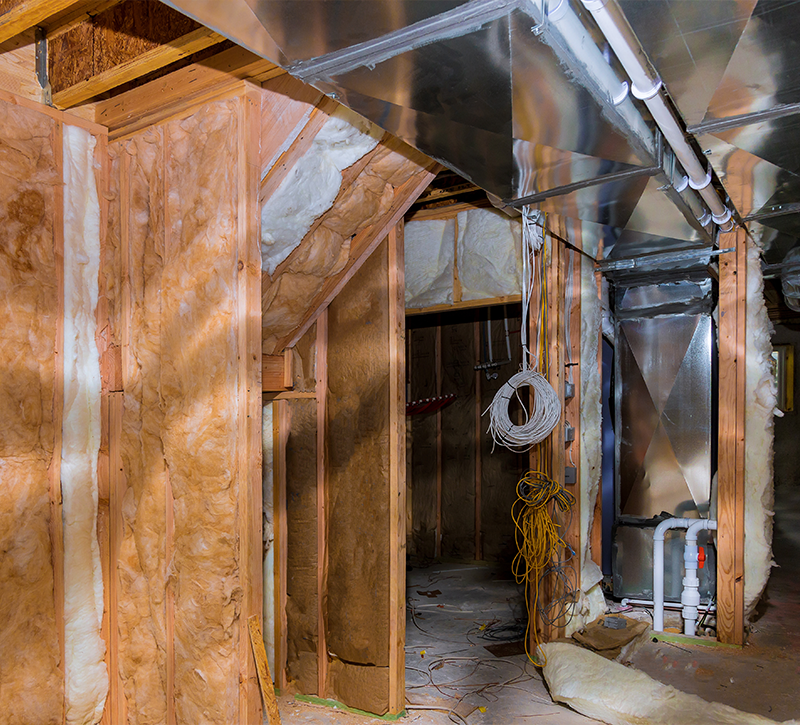
Crawl Space Wall Insulation Guide

Proper insulation is vital for a crawl space to ensure energy efficiency, reduce utility bills, and improve the comfort of your home. Here's a comprehensive guide on crawl space wall insulation.
Why Insulate Your Crawl Space Walls?
Insulating crawl space walls can offer multiple benefits:
- Energy Efficiency: Insulation can prevent heat transfer, reducing your heating and cooling costs.
- Comfort: It helps maintain a consistent indoor temperature.
- Moisture Control: Insulation can reduce the chances of mold and mildew due to moisture buildup.
- Pest Control: Proper insulation can deter pests and rodents from settling in the crawl space.
Types of Insulation Suitable for Crawl Spaces:
- Batt Insulation: Typically made from fiberglass, this is one of the most common forms of insulation for crawl spaces.
- Rigid Foam Board: Made from polystyrene, polyisocyanurate, or polyurethane, it offers high insulating values with less thickness.
- Spray Foam Insulation: This insulation expands upon application, filling gaps and providing an air seal.
Steps to Insulate Crawl Space Walls:
- Inspect and Prepare the Crawl Space:
- Check for signs of water damage, mold, or pests.
- Clean and dry the area thoroughly.
- Repair any foundation cracks or gaps.
- Choose the Right Insulation:
Consider the climate and specific needs of your home.
Ensure the insulation has the proper R-value (a measure of thermal resistance) for your region.
- Install the Insulation:
- For Batt Insulation:
Cut the batts to fit between the crawl space wall studs.
Secure the insulation with staples, ensuring it's snug against the wall.
- For Rigid Foam Board:
Measure and cut the boards to fit the wall dimensions.
Attach the foam board directly to the walls using adhesive or mechanical fasteners.
- For Spray Foam Insulation:
It's recommended to hire professionals due to the complexities involved in its application.
- Add a Vapor Barrier (if necessary):
A vapor barrier can prevent moisture from entering the crawl space.
Lay a thick plastic sheet or specialized vapor barrier product on the crawl space floor and secure it with tape or stakes.
- Regular Maintenance:
Inspect the insulation periodically for any signs of damage or wear.
Ensure the crawl space remains dry and well-ventilated.
Insulating your crawl space walls can greatly improve your home's energy efficiency and overall comfort. Whether you decide to take a DIY approach or hire professionals, understanding the importance and process of insulation can make a significant difference in the long-term health and safety of your home.
Advanced Tips for Crawl Space Wall Insulation
Having covered the basics of crawl space insulation, let's delve deeper into some advanced tips and considerations to ensure you make the most out of your insulation project.
Understanding R-Value
The R-value of insulation measures its resistance to heat flow. The higher the R-value, the better the insulation's thermal performance. For crawl spaces:
- Cold Climates: Opt for insulation with a higher R-value.
- Mild Climates: A moderate R-value should suffice.
Remember, local building codes often specify minimum R-values. It's wise to check these regulations before making a purchase.
Safety Precautions
When working in crawl spaces and dealing with insulation:
- Wear Protective Gear: This includes a dust mask, safety goggles, gloves, and a full-sleeved shirt.
- Ensure Proper Ventilation: Adequate airflow prevents the buildup of harmful fumes, especially if you're using certain types of insulation or adhesives.
- Be Cautious of Wiring and Piping: These can often run through crawl spaces. Don't damage them during the insulation process.
Sealing Air Leaks
Before adding insulation, it's essential to seal any air leaks in the crawl space. This ensures you get the maximum benefit from your insulation.
Use caulk or expanding foam insulation to seal any gaps or cracks in the walls.
Pay special attention to areas where wires and pipes penetrate the wall.
Dealing with Moisture
While a vapor barrier can prevent ground moisture from entering the crawl space, you should also consider:
- Crawl Space Encapsulation: This involves sealing the entire crawl space, including the walls and floor, with a thick, durable plastic vapor barrier. It's more comprehensive than just laying a barrier on the floor.
- Dehumidifiers: If you have consistent issues with moisture, a dehumidifier can help maintain a dry environment in your crawl space.
Cost Considerations
The cost of crawl space insulation can vary based on:
- The type of insulation you choose.
- The size of your crawl space.
- Labor costs if you hire professionals.
- It's advisable to get multiple quotes if hiring a contractor and weigh the benefits of each insulation type against its cost.

 Rated Excellent
Rated Excellent